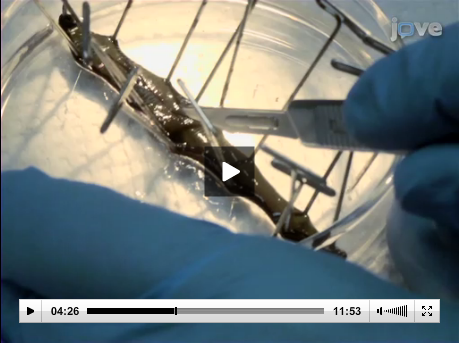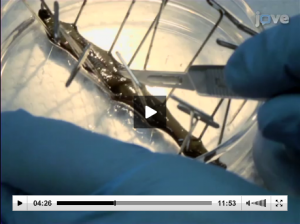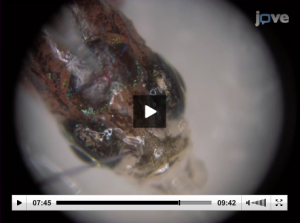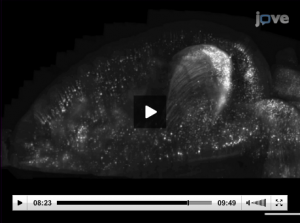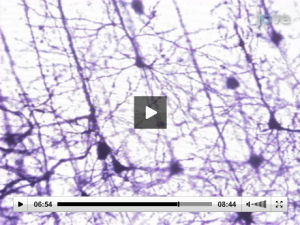Note: Our Editor’s Picks selections are updated on the JoVE main page bi-weekly. Today we feature videos chosen by Jane Hannon, our Associate Editor for Neuroscience. Our next collection of Editor’s Picks will be available here on 12/9, and will be highlighted on the blog on 12/16.
 Jane Hannon says that she dropped her childhood aspirations of being a detective in favor of pursuing her growing interest in understanding how the brain works. Today she shares 4 recently published videos to offer us all a glimpse into the fascinating field of neuroscience.
Jane Hannon says that she dropped her childhood aspirations of being a detective in favor of pursuing her growing interest in understanding how the brain works. Today she shares 4 recently published videos to offer us all a glimpse into the fascinating field of neuroscience.
Pick #1 — “Intracellular Recording, Sensory Field Mapping, and Culturing Identified Neurons in the Leech, Hirudo medicinalis”
“This video is about a leech model system,” says Jane, “and it has an unusual, quirky little explanation in the introduction about why the leech is interesting as a model system. The introduction is by John G Nicholls, a big name in the neuroscience field. He explains that you can really get a grasp of the fundamentals of neuroscience by studying the simplified nervous system of the leech.”
Pick #2 — “Electrophysiological Recording in the Brain of Intact Adult Zebrafish”
“Here we are applying what we learned from the leech model video, but in adult zebrafish while they are still alive,” Jane says, “It’s interesting because it’s about one step up in complexity from the leech model video. By tapping into the extracellular electrophysiological response of zebrafish in vivo, we are able to see the effects of different pharmacological compounds in action.”
Pick #3 — “Sub-milisecond Conformational Changes in Proteins Resolved by Photothermal Beam Deflection”
“This video takes us, again, another step up in the evolutionary chain,” says Jane, “It’s a really cutting edge video. The organism itself is more complex, and our authors look at an entire mammalian brain. It’s more of a macro approach to neuroscience, as opposed to the leech video, which is more micro. And for what it’s worth, [the brain images] are quite pretty.”
Pick #4 — “Visualizing the Effects of a Positive Early Experience, Tactile Stimulation, on Dendritic Morphology and Synaptic Connectivity with Golgi-Cox Staining”
“Here we are looking at environmental effects on dendritic morphology. Using rat models, pups are either brushed with a feather duster daily, or not touched at all. The video looks at the effects of this tactile stimulation on neuroplastic changes. So, if you hold and show physical affections for rats it actually changes their dendritic morphology. These researchers are studying the way the dendrites connect—tying in behavioral aspects to environmental influences on how neurological systems work.”
Why does Jane recommend watching neuroscience articles?
“I love working with the neuroscience section because it can span a wide breadth of research—from cellular levels, to isolated systems, all the way up to examining the entire organism at once. It keeps it very interesting. You never really know what you’re going to see.”


